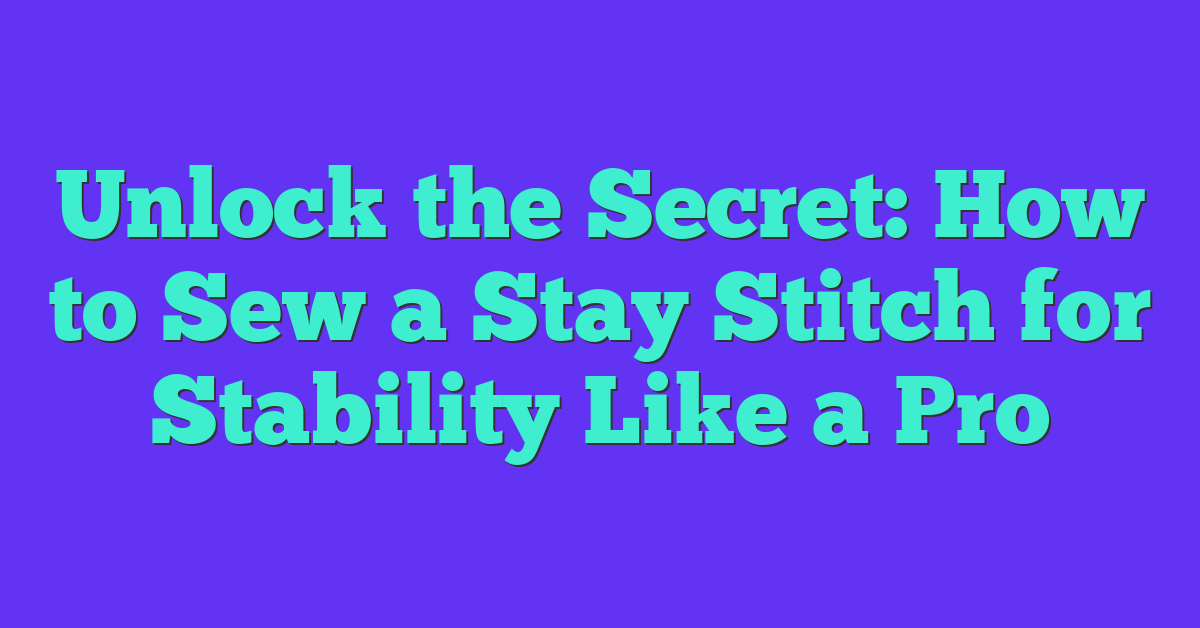There’s something special about adding a personal touch to your home decor, and sewing your own tablecloth is a perfect way to do just that. Whether you want to match your dining room’s color scheme or create a unique centerpiece for family meals, making a tablecloth lets you combine creativity with practicality. Plus, it’s easier than you might think!
Why Sew Your Own Tablecloth?
Customizing a tablecloth ensures it fits your specific dining table dimensions. Standard tablecloths may not accommodate unique sizes or shapes, but sewing your own creates a perfect fit every time.
Crafting your own tablecloth allows complete control over fabric selection. Choosing materials like cotton, linen, or polyester blends provides flexibility for durability, style, or ease of cleaning based on your dining needs.
Sewing adds a personal touch to room decor. From incorporating embroidery to using vibrant or subtle patterns, each design detail reflects your taste, making it unique.
Creating a tailor-made tablecloth supports budget-friendly customization. Purchasing fabric and basic tools can save money compared to high-quality ready-made options. Additionally, leftovers can be repurposed for matching napkins or placemats.
Engaging in sewing nurtures creativity and provides a rewarding experience. Handcrafting items builds a sense of accomplishment, transforming everyday dining spaces into personalized settings.
Materials You Will Need
Creating a custom tablecloth requires careful material selection to achieve the best results. Here are the essentials to keep your project smoothly on track.
Fabric Selection
The fabric sets the foundation for your tablecloth. I recommend using cotton, linen, or polyester blends as they’re durable and easy to sew. For a formal look, consider satin or damask. Measure your table’s length and width, then add 12-20 inches to each dimension to accommodate drape. If you’re adding embellishments, ensure there’s enough extra fabric.
Choosing the Right Thread
Choose a thread that complements your fabric’s color and type. I prefer polyester thread for most tablecloths because it’s strong and works well with different materials. If your fabric is delicate, like silk or satin, a finer thread improves the finish. Always match the thread color to your fabric or use a neutral shade like white or cream for versatility.
Additional Tools and Accessories
A few tools ensure precise sewing. Use fabric scissors for clean cuts and a measuring tape for accuracy. Pins or clips hold the fabric securely while sewing. A sewing machine speeds up the process, but hand sewing works fine for simpler designs. For hemming, select an iron to press the edges, ensuring sharp, professional folds. Optional tools like an embroidery hoop and decorative trims add extra flair to your tablecloth.
Step-By-Step Guide To Sewing a Tablecloth
Creating a custom tablecloth involves a few clear steps. Following these ensures an accurate fit and a professional-looking result.
Step 1: Measuring Your Table
I start by measuring the table’s length and width using a measuring tape. To achieve the desired drape, I add 8-12 inches on each side for rectangle and square tables or 6-8 inches for round tables. For example, a rectangular table measuring 60×40 inches requires a fabric piece of at least 76×56 inches for a generous drape. If the table has unique features, I sketch the dimensions to double-check measurements later.
Step 2: Cutting the Fabric
I lay the fabric flat on a cutting surface, ensuring it’s smooth and free from wrinkles. Using the measurements from the first step, I mark the cutting lines with tailor’s chalk or an air-erasable fabric pen. For straight edges, I align a ruler or yardstick along the lines before cutting with sharp fabric scissors to achieve clean edges. Rounded tables may require sketching a circular guide with a string and pencil for precise cutting.
Step 3: Hemming the Edges
I fold the fabric edge 1/2 inch toward the wrong side, then iron it to create a crisp fold. For added durability, I fold it again by another 1/2 inch to encase the raw edge. Once pinned in place, I sew along the folded edge using a straight stitch, keeping my stitches neat and even. For heavier materials like linen, I might use a longer stitch length to prevent uneven tension.

Step 4: Adding Decorative Finishes
For a personalized touch, I select decorative trims like lace, bias tape, or tassels to attach along the hemline. I sew these elements carefully with a straight stitch, aligning them evenly. If I want a unique design, I use an embroidery hoop to add monograms, floral patterns, or seasonal motifs directly onto the fabric. For instance, embroidered leaves make a great autumn-themed table setting.
Tips for Perfecting Your Tablecloth
Achieving a flawless tablecloth combines precision, creativity, and attention to detail. With the right techniques, you can avoid errors and enhance your design for a polished look.
Dealing With Common Mistakes
Avoiding common sewing mistakes keeps the process smooth. I check measurements twice before cutting the fabric to ensure accurate dimensions. Uneven hems often occur when folding isn’t consistent—using an iron to press folds creates neat, even edges. Skipping pins can lead to fabric slipping, so I always secure my material with pins or clips before sewing.
Mismatched threads detract from the design. Selecting thread that matches the fabric color or contrasts intentionally enhances cohesiveness. Sewing machine tension issues can cause uneven stitches; I test on fabric scraps and adjust settings accordingly. Taking time to rethread or adjust the bobbin prevents stitch irregularities.
Styling Ideas for Your Finished Tablecloth
Creative styling elevates your finished tablecloth. I like adding embellishments, such as lace trims or rickrack, to the edges for decorative detail. Embroidered patterns, like floral motifs or monograms, create personal touches. Using complementary fabrics for borders or appliqués introduces contrast and visual interest.
« How to Sew a Stunning Beach Cover-Up for Summer (Step-by-Step Guide You’ll Love!)
Master Sewing a Fabric Hair Scrunchie Set: Easy Tips for Stylish DIY Accessories »
Layering your tablecloth with runners or placemats accents your dining setup. Pairing solid tablecloths with patterned accessories, or vice versa, creates balance. For seasonal themes, I recommend incorporating festive colors or designs—like autumn leaves or holiday motifs—to match celebrations.
Conclusion
Sewing your own tablecloth is such a rewarding way to bring personality and charm to your dining space. It’s a chance to get creative, experiment with fabrics and designs, and craft something that truly reflects your style. Plus, there’s nothing quite like the satisfaction of enjoying a handmade piece during meals with family and friends.
Whether you’re keeping it simple or adding intricate details, the effort you put in will shine through. So grab your materials, take your time, and have fun with the process. Before you know it, you’ll have a beautiful tablecloth that’s uniquely yours!

















